Key Takeaways
This is the third installment in Founder Shield’s venture capital (VC)-Focused series and explains venture capital insurance claims VCs might face from their investors. If you’d like to learn more about the basics of what these insurance policies do and don’t cover, check out our intro post as well as our post about regulatory investigations.
No one plans on upsetting investors. Unfortunately disagreements occur, talks break down, and a sternly worded demand from a law firm with six names on the letterhead appears on your desk.
Now, you’re dealing with the largest source of venture capital insurance claims: an investor lawsuit.
I Feel Like I Should Sue You
An investor may feel that poor returns were due to poor decisions on your part (aka “breach of fiduciary duty”). Fees and expenses could be charged in such a way that an investor didn’t expect and doesn’t like. Maybe one LP thinks that another LP is receiving preferential treatment. Or perhaps an investor is of the opinion that the disclosures in your PPM didn’t do a good enough job of describing risks or target investments or liquidation procedures (aka a “material misrepresentation”).
“Feel”, “thinks,” and “is of the opinion”… as fluffy and subjective as these words are, the consequences of what they represent can be critical to the performance of your fund. All it takes for you as a venture capitalist to have to start shelling out in legal defense costs is an upset investor with a decent lawyer and a grievance that is not — at least on its surface — frivolous. By the time the judge/arbiter concludes that you did not do anything wrong, you have accumulated a legal bill that is going to have a major impact on your IRR. Legal defense costs from an investor lawsuit can run into the hundreds of thousands of dollars.
The first piece of good news we have for you: in the financial institution (FI) universe, investors in venture capital funds present a slightly lower risk profile than many of their FI brethren. Part of the reason is right there in the name ‘venture’. This is not blue-chip equity investing. There is an implied high risk of failure in the VC space that has historically limited an investor’s motivation to sue his or her GP on the basis of poor performance. Make no mistake, this does not mean you are immune from an investor lawsuit just because you manage a VC. What it means is that some insurance companies want to keep a relatively high percentage of venture capital firms on their books and this competition can drive down premiums.
But Which Investor Lawsuit is Right for Me?
Not all venture capital LP’s are created equal. As a group, they do indeed represent a less risky class from the insurance company’s point of view, but keep in mind the type of LP you admit into your fund can have a huge impact on the likelihood and severity of an investor lawsuit. Here are the top 4 venture capital insurance claims broken down by investor type.
1. Friends and Family
Friends and family are definitely considered lower risk investors, but there is a caveat: Yes, Aunt Edna is less likely to sue you than a public pension fund is, but investment managers of FI’s are less able to plead ignorance in the event of complex legal or financial disputes (e.g. fee disclosures). FI’s employ men and women with advanced degrees from prestigious universities. They are Chartered Financial Analysts and time-tested rainmakers…no competent judge would allow them to claim they did not understand the concept of carried interest. At the same time, while Aunt Edna might be better able to claim she is a fleeced investor, she does not have the deep pockets that allow FI’s to conduct expensive investor lawsuits that can keep you tied up with court dates for a year or more. Grandma probably would’ve stepped in by then anyway.
Insurance Retention Note: The first piece of good news we have for you: in the financial institution (FI) universe, investors in venture capital funds present a slightly lower risk profile than many of their FI brethren. Part of the reason is right there in the name ‘venture’. This is not blue-chip equity investing. There is an implied high risk of failure in the VC space that has historically limited an investor’s motivation to sue his or her GP based on poor performance. Make no mistake, this does not mean you are immune from an investor lawsuit just because you manage a VC. What it means is that some insurance companies want to keep a relatively high percentage of venture capital firms on their books, and this competition can drive down premiums.
2. Pension Funds and Endowments
There are both pros and cons to having public pension funds and endowments in your fund. This is an insurance blog after all, so let’s be pessimists and start with the cons.
Many of these FI’s are required to publicly report the identity of your firm and the returns generated by your hard work. For some VC’s, this lack of confidentiality can be a thorn in the side. Pensions and endowments are also bound by strict fiduciary duties to their beneficiaries and will be quick to commence an investor lawsuit if they believe they were wronged. On top of that, they can be flighty. If you report a large loss or the departure of a key executive you could lose the faith of your pension plan investors. Many are bound by predetermined trigger events that take the decision of when to step away from an investment out of the hands of your contact. While your lock-up provisions may prevent a run on this fund, raising your next fund will be that much more difficult without their support.
But it would unfair and inaccurate to paint public pension fund and endowment investors as a bad class of LP. Oftentimes these firms are great partners. Many have tremendous amounts of investment experience and can offer sage guidance. They can provide access to diverse networks and connect you with top tier service providers. They also lend your firm a trait that is as valuable as it is inimitable: Legitimacy. When you can claim to have an organization like the California Public Employees’ Retirement System on your list of LP’s, you are walking with a big stick. It is likely that your Venture Capital Insurance premiums will be lower if you are able to point to this fact and the implicit stamp of approval that comes with it.
3. Funds of Funds
Another common type of investor, funds of funds can act as a sophisticated and experienced business partner as you move forward. There is a reason that a fund of funds will choose to invest in your firm: they’ve done their due diligence and they believe in the prospect of a mutually beneficial relationship between you and them. Like pensions and endowment investors, they have networks and contacts that can boost your competitive advantage.
The disadvantage here is that a fund of funds has its own investors to whom they have a fiduciary duty. The pressures the fund of funds is under can quickly become your pressures. Consider the fees that you are charging to your investors. A fund of funds has its own fee structure and thus a much higher threshold than your other LP’s for what constitutes a ‘successful investment’. The term of your fund can also cause friction. Since funds of funds are usually closed-end vehicles like your own, proper alignment of your respective harvesting timelines will help avoid undue pressure being put on you. This issue is often contemplated well before they make their capital commitment, but it is something to be mindful of as you consider the composition of your investor base.
4. High Net Worth Individuals
High net worth individuals are some of the more common LP’s in this space. The great part about these folks is that they are able to operate with more independence than the above examples. A high net worth individual has a duty only to him or herself — there is no public interest or second tier of limited partners to which they are held accountable. This makes them more flexible and nimble, more able to go with the flow in the event of operational or structural changes.
Depending on their level of sophistication however, they also can open the door to what is known as “retail investor risk.” This is the risk that you, as a professional investor, will be perceived as having taken advantage of an novice investor. Keep in mind that the courts will not necessarily consider an investor to be an expert simply because they are accredited. The classic — but by no means ubiquitous — example here is doctors: they may have the net worth to be considered accredited but at the same time they may be just as good at understanding offering documents as you are at understanding blood test results. (Readers from the biotech space can feel free to ignore that last simile.)
Many funds mitigate this risk by keeping a high minimum LP commitment, usually $1M and over. Setting a high barrier for entry can help to weed out some of the higher-risk investors, but this is not a fool-proof defense— which leads us to our next topic.
You Can Protect Yourself from Investor Lawsuits
As a good VC you are always going to work in each of your LP’s best interests, to use best-in-class compliance and risk management controls, to frequently educate and update your investor base with an emphasis on transparency, and to do everything in your power to maximize returns for your investors.
If you have all of that down then you are in great shape. But if you really want to do right by yourself, your family, your company, and your other investors, you should consider getting in touch with an insurance professional to set you up with a Venture Capital Insurance policy.
This product offers Directors & Officers (D&O) and Errors & Omissions (E&O) Liability coverage that is specifically tailored for a VC’s unique risks. With one of these in place, your insurer will step in to pay defense costs, judgments, and settlements caused by covered investor lawsuits.
They may also (depending on your preference and the specific language of your policy) manage the defense process so that you can spend more time focusing on the things that got you into the VC industry in the first place.










